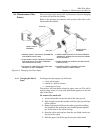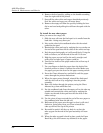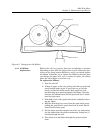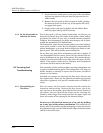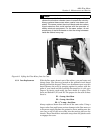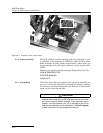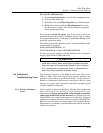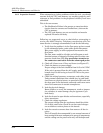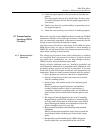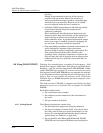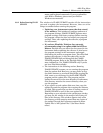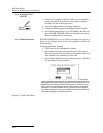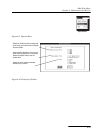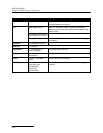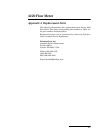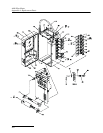
4220 Flow Meter
Section 6 Maintenance and Service
6-15
9. Check the input signals to the unit and see that they are
correct.
This may require the use of an oscilloscope. You may need
to consult Customer Service for the proper appearance of
wave forms.
10. Check to see that the crystal oscillator is operating and at
the proper frequency.
11. Check the reset circuitry to see that it is working properly.
6.7 Precautions for
Servicing CMOS
Circuitry
Most of the circuitry in the 4220 Flow Meter is made up of CMOS
components. Because of the oxide gate structure of these devices,
they are extremely susceptible to destruction caused by the dis-
charge of static electricity through their inputs.
Note that many of the driver transistors in the 4220 are power
MOS devices; they are just as susceptible to static damage as
CMOS ICs are. Because of this risk, certain precautions must be
taken when working on these circuits.
6.7.1 Hazard of Static
Electricity
The voltage levels present from static buildup due to walking
over carpeted floors, movement of woolen or synthetic clothes
over chair seats, workbenches, etc., are high enough to destroy
CMOS circuitry when performing repair work.
Ideally, all tools, soldering irons, etc., should be grounded, and
work should be conducted on a grounded metal workbench, with
grounding straps worn on the wrists of personnel. It is recog-
nized that in most field repair situations, such precautions are
impractical. However, certain extreme hazards must be avoided.
• Never perform any work in a room with a carpeted floor.
• Always roll up sleeves so that your arms are in contact
with the working surface.
• Avoid using a work surface made of an extremely good
insulator.
Plastic and glass are good insulators and should be
avoided. A metal surface is best; a wood surface is
acceptable. Conductive grounding mats are available for
work stations and are worthwhile if much repair is to be
done.
• The degree of hazard depends on the level of humidity.
Be particularly careful if the work area is extremely dry,
or if the work is being done in cold seasons, when indoor
forced heating and outdoor low temperatures cause the
relative humidity level to be very low.
• Keep yourself grounded when handling disassembled
equipment.
After a unit has been opened for repair, always touch the
metal chassis before touching any of the circuit compo-
nents.
• Be especially careful handling the CMOS integrated
circuits when they are removed from the rest of the



